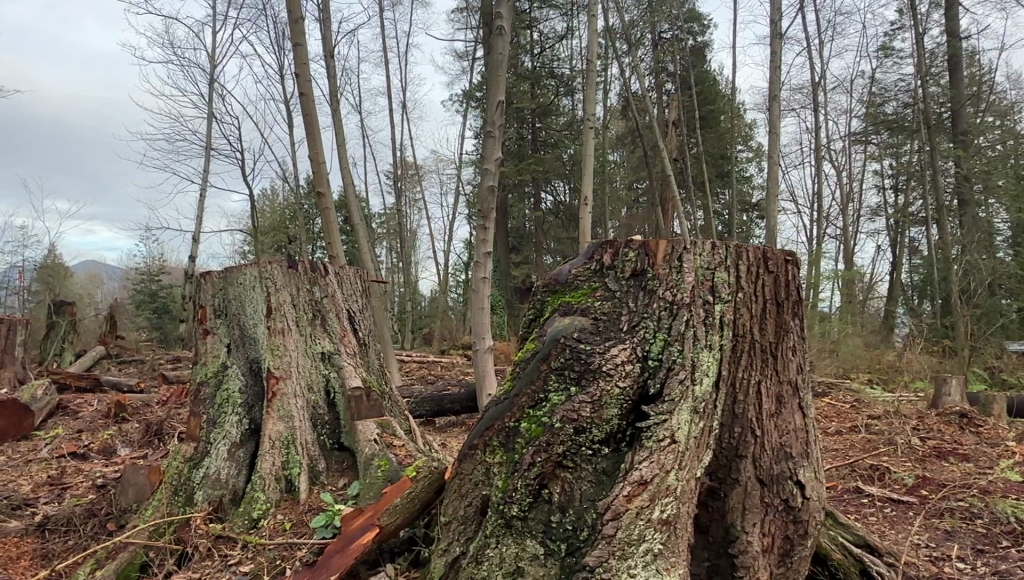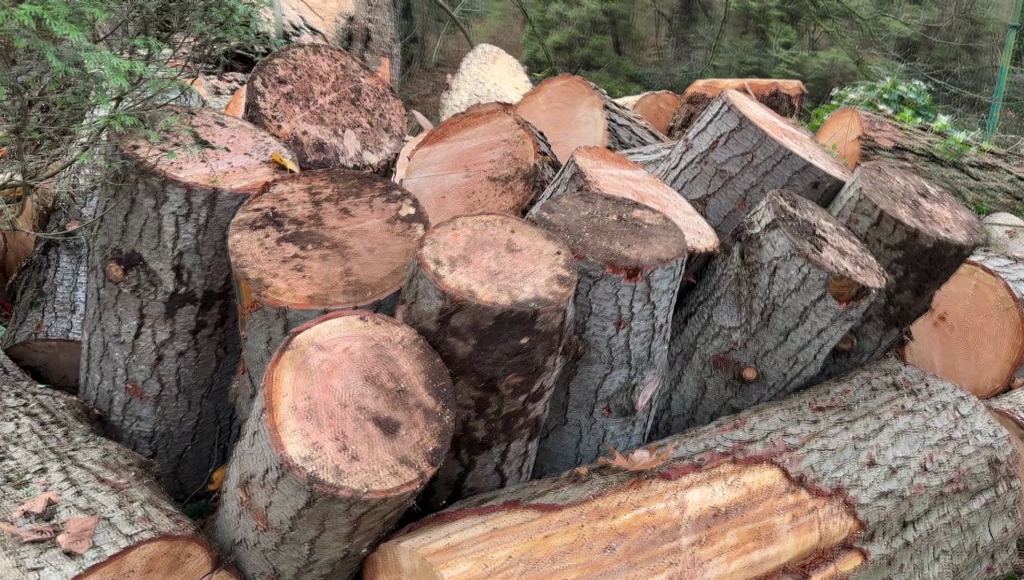Stanley Park tree removal turns heads of parkgoers

Posted December 17, 2023 8:54 pm.
Last Updated December 18, 2023 3:06 pm.
Thousands of trees in Vancouver’s Stanley Park are getting cut down, and the park’s new aesthetic is sparking some mixed emotions from parkgoers.
The City of Vancouver says more than 160,000 trees are being cut down in Stanley Park due to a looper moth infestation. According to the city, roughly 25 per cent of trees in Stanley Park have been damaged by the looper moth and the majority of them are Western Hemlocks — the preferred food for the bug.
Now that the felling has begun, the tree stumps in Vancouver’s Stanley Park are turning heads.
“It’s sad to see the trees on the floor,” one parkgoer told CityNews. “This is one of the best things about this park, just to see the trees. This is tradition for Vancouver. It’s losing the identity of the park.”
“I did notice the trees cut here at Prospect Point and it’s not very enjoyable, to be honest,” another said. “It’s just emptiness.”
John Richardson, a wildlife biologist with the University of British Columbia, says the native hemlock looper moths go through cycles that are 11 to 20 years in length, and Stanley Park is currently experiencing an outbreak of these insects.
“The outbreak will last about three years,” Richardson said.
“When it gets to the point where nearly 80 per cent of the leaves have been eaten, they are unlikely to survive. They just can’t put enough energy and nutrients back into the soil to get them through the winter.”
But the number of trees being cut down is inciting some parkgoers to share their concerns about wildlife that lived in the logged trees.
“They have their houses and having them cut down is going to affect them as well,” one parkgoer said.
On social media, some are questioning the number of trees being cut down in Vancouver’s crown jewel. One post says the park is now “barren” and another says the city is “aggressively cutting down trees in Stanley Park.”



The city says, of the trees coming down, 140,000 are young, dead and brown trees under 20 centimetres in diametre. It adds the remaining 20,000 dead trees are larger than 20 centimetres in diametre.
According to the city, dead trees will contribute to wildfire surface fuel if left in place.
The drought conditions that heighten fire risk also contributed to the scale of this infestation.
“Because of the drought conditions, the trees are stressed and more vulnerable to be eaten by looper moth larvae,” Richardson says.
He says the cutting of these trees may not look nice, but it needs to happen to keep park visitors safe from hazards such as dead trees falling over during a wind storm.
“Because it’s a public park, we do always have to be concerned about safety and that’s something that park people have look out for,” Richardson said.
The city says they plan on clearing trees until the last week of January, and it intends to work with Host Nations on repurposing some of the western red cedar and Douglas fir logs.







